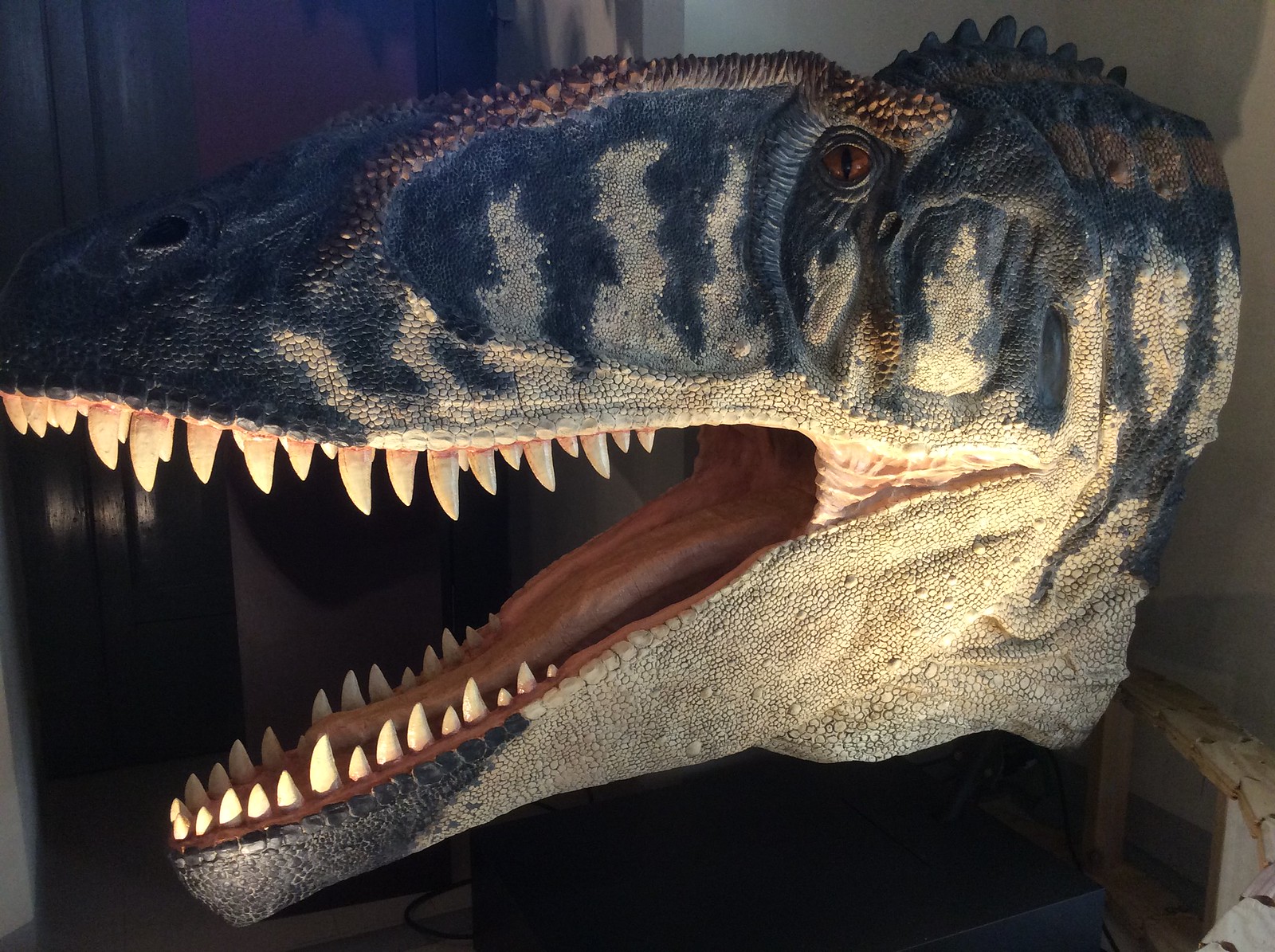Post by Infinity Blade on Feb 9, 2014 8:48:00 GMT 5
Coahuilaceratops magnacuerna
Coahuilaceratops (meaning "Coahuila horn face") is a genus of herbivorous ceratopsian dinosaur. It is a chasmosaurine ceratopsian which lived during the Late Cretaceous period (late Campanian stage) in what is now southern Coahuila in northern Mexico. It is known from the holotype CPC 276, a partial skeleton of an adult individual which includes several skull elements. Another specimen, CPS 277, may represent a juvenile Coahuilaceratops. All specimens of Coahuilaceratops were collected from a single location in the middle strata of the Cerro del Pueblo Formation, which dates to between 72.5 and 71.4 million years ago.[1] It was formally described in 2010, though it appeared as an informal designation (nomen nudum) as early as 2008.[2] Coahuilaceratops was named by Mark A. Loewen, Scott D. Sampson, Eric K. Lund, Andrew A. Farke, Martha C. Aguillón-Martínez, C.A. de Leon, R.A. Rodríguez-de la Rosa, Michael A. Getty and David A. Eberth in 2010 and the type species is Coahuilaceratops magnacuerna.[1] Although they are incomplete, Coahuilaceratops is thought to possess among the largest horns of any dinosaur currently known, rivaling in absolute size those of larger Chasmosaurines like Triceratops and Torosaurus. Its horns are estimated to have been up to 4 feet (1.2 m) long.[3][1]

Rubeosaurus ovatus
Rubeosaurus (meaning "bramble or thornbush lizard") is a genus of ceratopsian dinosaur which lived in what is now North America. Rubeosaurus fossils have been recovered from strata of the upper Two Medicine Formation of the Upper Cretaceous of Montana, dating to 74.6 million years ago.[1] The holotype specimen, USNM 11869, is composed of a partial parietal and was discovered by George F. Sternberg in 1928. A second specimen, MOR 429, is composed of a partial skull including a partial left premaxilla, co-ossified left and right nasals with horncore, partial left postorbital with horncore, and a nearly complete right parietal with two spikes. It was discovered in 1986.[1] This genus was named by Andrew T. McDonald and John R. Horner in 2010, and the type species is Rubeosaurus ovatus. Formerly this species was assigned to Styracosaurus.[2] It is found as the sister taxon to Einiosaurus. It is notable for its large broad–based nasal horn and the ornamentation of its bony frill: there were one or two pairs of straight spikes on the edge, with the two spikes closest to the midline pointing so that they converged.[1] Immature specimens referred to a separate genus, called Brachyceratops, may be juvenile Rubeosaurus.[1][3]

Coahuilaceratops (meaning "Coahuila horn face") is a genus of herbivorous ceratopsian dinosaur. It is a chasmosaurine ceratopsian which lived during the Late Cretaceous period (late Campanian stage) in what is now southern Coahuila in northern Mexico. It is known from the holotype CPC 276, a partial skeleton of an adult individual which includes several skull elements. Another specimen, CPS 277, may represent a juvenile Coahuilaceratops. All specimens of Coahuilaceratops were collected from a single location in the middle strata of the Cerro del Pueblo Formation, which dates to between 72.5 and 71.4 million years ago.[1] It was formally described in 2010, though it appeared as an informal designation (nomen nudum) as early as 2008.[2] Coahuilaceratops was named by Mark A. Loewen, Scott D. Sampson, Eric K. Lund, Andrew A. Farke, Martha C. Aguillón-Martínez, C.A. de Leon, R.A. Rodríguez-de la Rosa, Michael A. Getty and David A. Eberth in 2010 and the type species is Coahuilaceratops magnacuerna.[1] Although they are incomplete, Coahuilaceratops is thought to possess among the largest horns of any dinosaur currently known, rivaling in absolute size those of larger Chasmosaurines like Triceratops and Torosaurus. Its horns are estimated to have been up to 4 feet (1.2 m) long.[3][1]

Rubeosaurus ovatus
Rubeosaurus (meaning "bramble or thornbush lizard") is a genus of ceratopsian dinosaur which lived in what is now North America. Rubeosaurus fossils have been recovered from strata of the upper Two Medicine Formation of the Upper Cretaceous of Montana, dating to 74.6 million years ago.[1] The holotype specimen, USNM 11869, is composed of a partial parietal and was discovered by George F. Sternberg in 1928. A second specimen, MOR 429, is composed of a partial skull including a partial left premaxilla, co-ossified left and right nasals with horncore, partial left postorbital with horncore, and a nearly complete right parietal with two spikes. It was discovered in 1986.[1] This genus was named by Andrew T. McDonald and John R. Horner in 2010, and the type species is Rubeosaurus ovatus. Formerly this species was assigned to Styracosaurus.[2] It is found as the sister taxon to Einiosaurus. It is notable for its large broad–based nasal horn and the ornamentation of its bony frill: there were one or two pairs of straight spikes on the edge, with the two spikes closest to the midline pointing so that they converged.[1] Immature specimens referred to a separate genus, called Brachyceratops, may be juvenile Rubeosaurus.[1][3]













